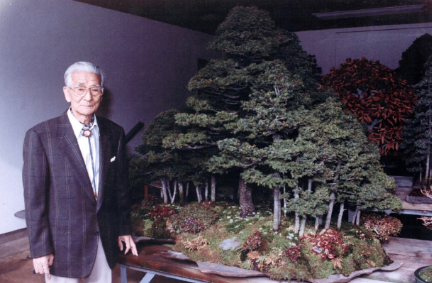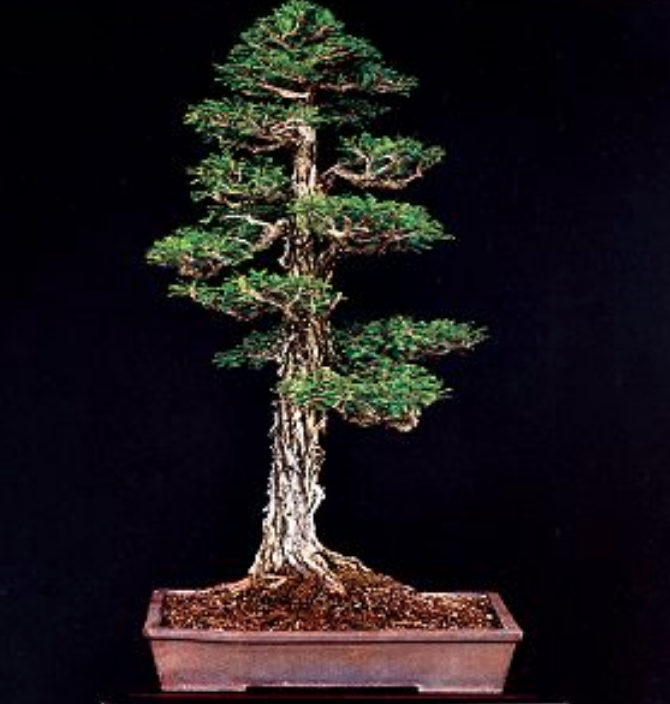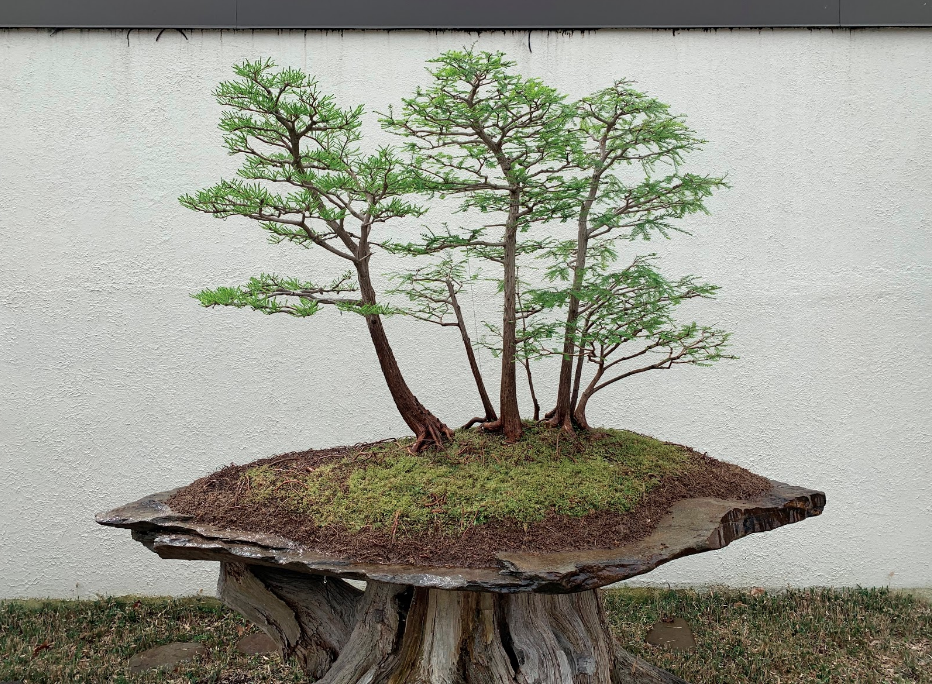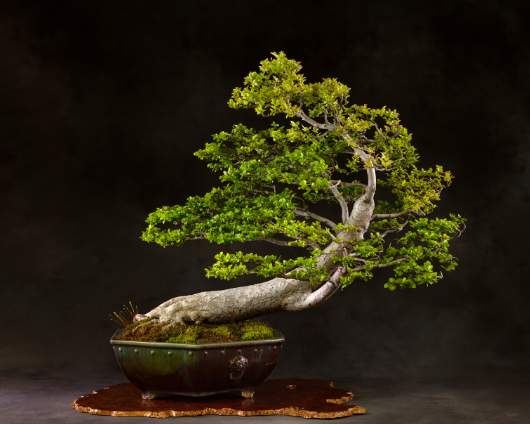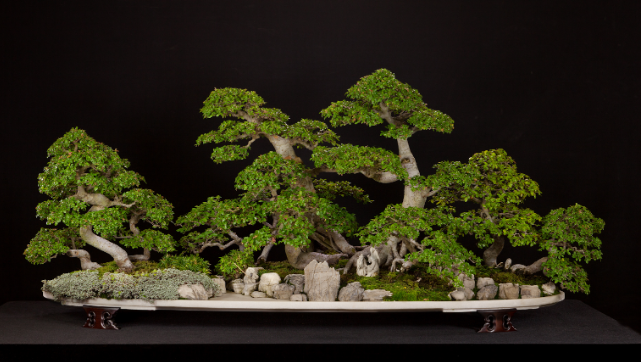Bonsai are often developed from seedlings or collected from nature. But this month’s Historical Tree Spotlight features a tree with a unique cultivation story.
Jack Douthitt, a prominent Midwestern bonsai master, retrieved this juniper from a cow pasture in South/Central Wisconsin. But before collecting the tree, Douthitt spent time training the juniper in the pasture, preparing it to be dug up so the tree had time to heal and recover from Douthitt’s initial cuts. Museum Curator Michael James said digging up the tree first may have resulted in lost branches and would have prolonged the tree’s recovery.
“Trees in the ground are much more strong and vigorous – they heal quicker,” James said. “Once it’s in a pot, growth is much, much slower. Those preparations he made in the field allowed him to collect the juniper and get it on the fast track to being a bonsai.”
Douthitt belonged to myriad local, national and international bonsai clubs, including Bonsai Clubs International, American Bonsai Society, Milwaukee Bonsai Society and Minnesota Bonsai Society. The National Bonsai Foundation recognized him in 1987 as “One of America’s Outstanding Bonsai Artists.”
Douthitt previously studied art and architecture but deviated from that background after discovering the world of bonsai.
“Once a painting is finished, I lose my emotional involvement with it,” he once said. “In bonsai, the creative process never stops, and the emotional involvement with it never ends.”
Douthitt’s juniper is native to the Midwest and resides in The National Bonsai & Penjing Museum’s North American Collection. The tree retains its small foliage throughout the year and forms both male and female cones as an adult tree. James added that some junipers naturally grow very low to the ground, crawling much wider than they do tall.
The juniper was repotted from its original rectangular pot to a more shallow, oval pot to better complement the tree’s figure. “That round shape of the pot really harmonizes with the trunk’s curves, whereas the old, rectangular edge just didn’t fit with those rounded trunks and branches,” James said.
While the tree technically falls under the evergreen category, James said the juniper’s branches cycle through a few different colors throughout the seasons. In the spring, the juniper sports lime green new buds that contrast against dark green older leaves, but the tree transforms into a deep green in the summer.
According to James, the juniper turns almost bronze-like when the cold starts to drift in during autumn, and its leaves develop a purplish color when the tree enters a deep dormant state in the middle of winter.




